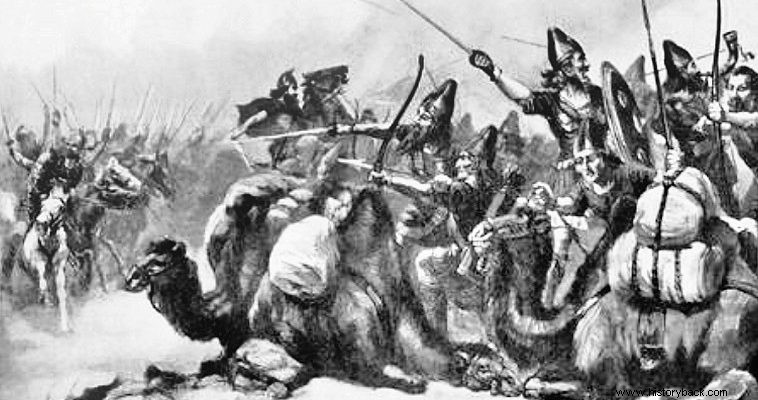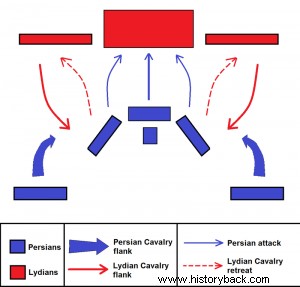
The battle of Thimbri one of the most important but also the least known of the ancient world. The victors took Asia Minor by a stroke. The battle was won thanks to a smart plan combined with "new" weapons.
Kyros, the first great king of Achaemenid Persia, began to build his empire after his victory over the sister nation of the Medes. His new opponent was Croesus of Lydia . Persians and Lydians clashed in the battle of Pteria in 547 BC. with the battle being inconclusive due to the solar eclipse that occurred.
After the battle Croesus felt that the Persian threat had died down for the next few months as winter had set in. However, Cyrus surprised him moving against the head of a large army, which according to Xenophon, numbered 200,000 men, Persians, Medes, and other subjects.
According to the Greek historian, the Persians had 126,000 infantry. The rest were horsemen. However, Cyrus had prepared two "secret weapons" to face the elite Lydian cavalry that had every reason to tremble... So the Persian monarch had 300 camels and 5-6 siege towers. He also had 300 chariots.
Xenophon reports that Croesus managed to gather an army of 420,000 men, including Phrygian, Cappadocian, Babylonian and Egyptian allies. The numbers given by Xenophon are judged to be exaggerated.
The battle
To counter the enemy's numerical superiority Cyros decided to line up his army in a not particularly orthodox way (see diagram). Cavalry, chariots and camels lined up on the wings, while his infantry lined up in the center with transport camels kneeling before him.
Cyrus feared the famous Lydian shock cavalry. For this he used the camels. Horses that are not used to the sounds, smell and sight of camels are afraid of them and do not approach them. This is exactly what the Persian king took advantage of.
Croesus, not caring about the way in which the opponents lined up, ordered, conventionally, his infantry in the center and the cavalry on the flanks. When, as Cyrus expected, the Lydian cavalry charged, they found themselves facing the camels and the "fire" of Cyrus' archers and towers. Confusion soon prevailed which Cyrus was quick to take advantage of by unleashing cavalry, chariots and camels against Croesus' horsemen, crushing them.
Soon the Persians surrounded the enemy infantry causing them heavy losses. However, most of Croesus' footmen surrendered. Those who survived fled with their king to the capital Sardis.
After the battle the Persians besieged and finally occupied Sardis winning not only the kingdom of Lydia but also Asia Minor. The story that Herodotus conveys is well known:Cyrus was preparing to throw Croesus into the fire. He then exclaimed:"Solon, Solon".
Cyrus then asked him what he meant and he answered about his meeting with the Athenian sage Solon, his pride and his belief that he was the happiest man in the world. Solon argued that such a thing was not true and it turned out that he was right...

